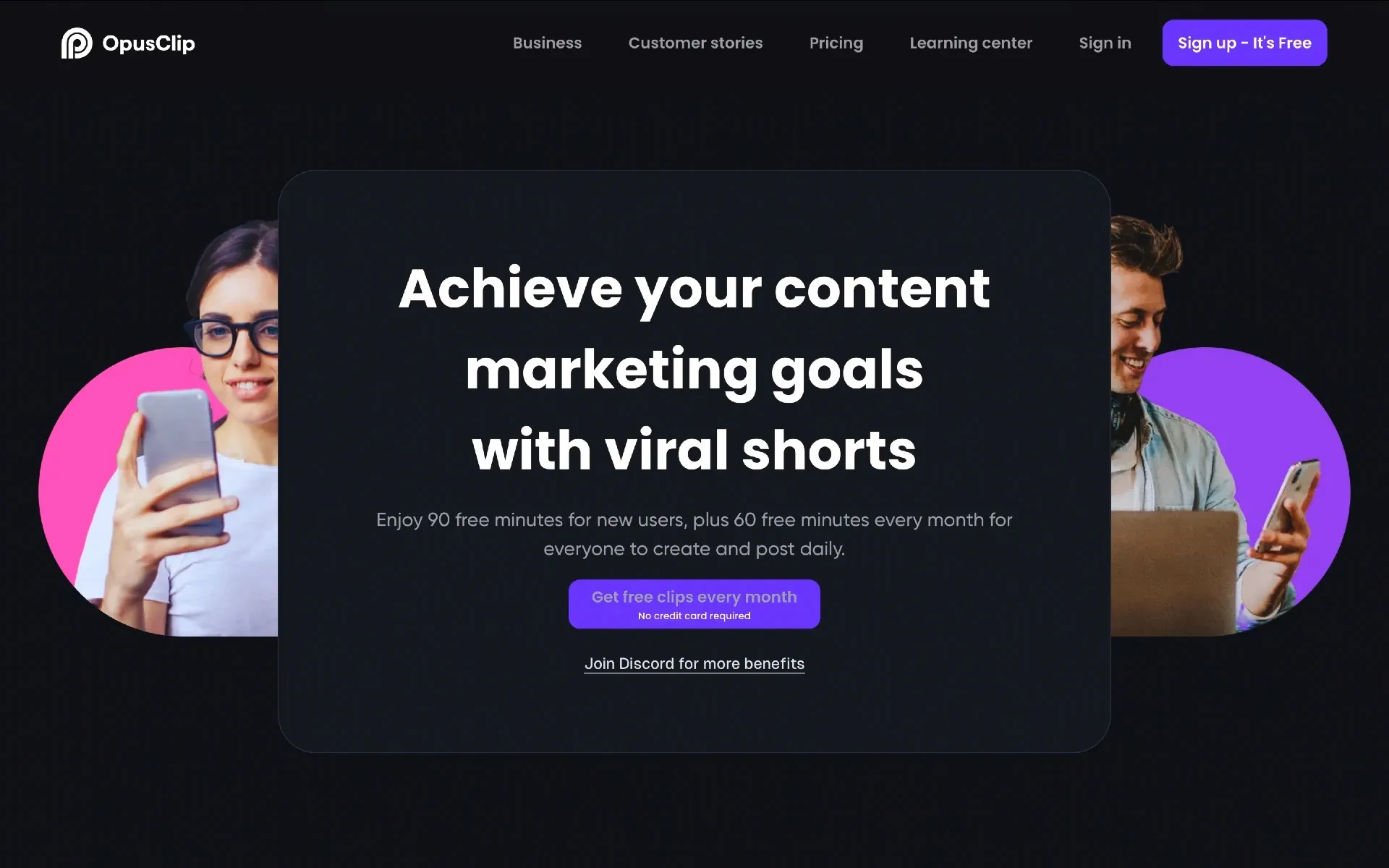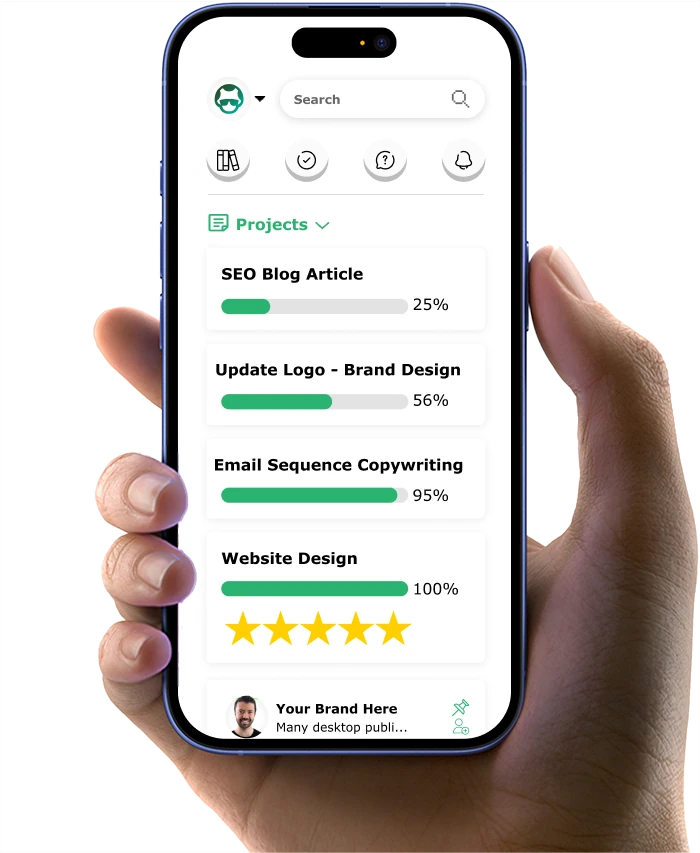Revenue Boost : 9 Pricing Strategies that Work

Is your SaaS pricing page turning visitors away instead of converting them? You're not alone.
You've spent thousands on ads and countless hours perfecting your product. But when visitors hit your pricing page, they vanish. This isn't just a small leak - it's a flood.
Most SaaS companies lose up to 80% of potential customers at the pricing page. Yet only 5% of these companies ever test or improve this critical page.
I've helped dozens of SaaS founders fix their pricing pages. The results are always eye-opening.
Take Michael, who ran a project management SaaS. His marketing drove steady traffic, but only 2% of pricing page visitors became customers.
"We were spending $15,000 monthly on marketing," Michael told me. "But our pricing page was leaking customers faster than we could bring them in."
After implementing the strategies I'll share today, Michael's conversion rate jumped to 5.4% - adding $230,000 in yearly revenue without spending an extra dollar on marketing.
In this article, I'll show you nine proven ways to improve your SaaS pricing page and boost your conversion rates. These aren't just theories - they're backed by solid research and real results.
Here's what you'll learn:
- The psychological pricing framework that guides visitors toward your most profitable plans
- How to present features so customers instantly understand their value
- Where to place social proof for maximum impact on buying decisions
- CTA design principles that create a smooth path to purchase
- The testing method that turns your pricing page into a conversion machine
Let's start by understanding why most SaaS pricing pages fail to convert...
If you want to get your marketing work done for your business (or for your clients’), then you HAVE to learn more how you can delegate unlimited marketing projects & tasks without the headaches of hiring. Download this free guide: 33 Examples of Marketing Projects You Can Delegate to Growbo
Why Most SaaS Pricing Pages Fail to Convert
You've spent thousands on ads and countless hours perfecting your SaaS product. But when visitors hit your pricing page, they vanish. You're not alone. SaaS companies lose up to 80% of potential customers at the pricing page – that's not just a leak, it's a flood.
What's really happening here? Your pricing page is likely working against you, not for you. A well-designed pricing page can boost conversion rates by 25-30%, directly impacting your bottom line. Yet most SaaS companies focus on acquisition while neglecting this critical conversion point.
The numbers tell a shocking story. According to ProfitWell, businesses that optimize pricing page at least quarterly grow 30% faster than those adjusting annually or less frequently. Despite this traffic, it often has the highest bounce rate of any page on your site.
You might wonder why so few companies fix this problem. Research from Price Intelligently reveals that only 5% of SaaS companies regularly test and optimize their pricing pages. This is despite clear evidence showing that companies that do so grow 30% faster than those that don't.
The impact on your business is substantial. Most SaaS companies could increase annual revenue by 30% with pricing page optimization alone. Think about what that means for your growth goals and profitability.
Even small changes can make a big difference. Growbo's research on Call to Action Fixes in SaaS Websites found that "Buttons that contrast with the page's color scheme can increase conversion rates by up to 32.5%."
Poor pricing pages directly hurt your customer lifetime value, increase churn rates, and reduce profitability. Consider what happened when SaaSCo (name changed) improved their pricing page: they saw a 27% increase in conversions and a 15% increase in average contract value within just 60 days.
The good news? You can fix your pricing page with proven strategies that work. Let's look at what makes a great SaaS pricing page and how you can apply these principles to your business.
Key Insights
Now that you understand why most pricing pages fail, let's explore what makes the successful ones work so well.
What Makes a Great SaaS Pricing Page?
You know your SaaS product delivers value, but does your pricing page show it? Creating an effective pricing page requires both art and science—balancing psychological triggers with data-driven decisions. Unlike physical products, your SaaS offering involves ongoing commitment, making the psychology behind these decisions unique.
Let's look at what works. According to an analysis of 387 SaaS pricing pages published on Medium, 81% use a multi-column layout, with 3-4 pricing tiers being the most effective for conversion. This structure has become standard as companies move away from overly complex or overly simplified approaches.
You might wonder if social proof really matters on pricing pages. The answer is yes. Research from CrazyEgg shows that companies including social proof elements on their pricing pages see a higher conversion rate than those that don't. This highlights one of the critical elements your pricing page must include.
Your pricing page success goes beyond simple conversion rate. You should track metrics like time spent on page, click-through rate to signup, plan distribution (which plans are most selected), abandonment rate, and support ticket volume related to pricing. These metrics give you a complete picture of how well your page is working.
Have you noticed how some pricing pages make you hesitate or feel confused? That's what we call "pricing page friction"—elements that cause hesitation, confusion, or abandonment during the decision-making process. Identifying and eliminating these friction points is essential for your page to convert effectively.
Understanding your customer's journey helps you design a better pricing page. As mentioned in our article on customer life cycle explains, knowing how customers think during the consideration and decision stages directly informs how you should structure your pricing information.
A great SaaS pricing page doesn't just list features and prices—it tells a story about value. It guides visitors toward the right plan for their needs while addressing concerns before they become objections. It builds trust through transparency and makes the next step crystal clear.
The most effective pricing pages share common elements: clear value propositions, simple plan comparisons, strategic highlighting of recommended options, trust-building elements, and frictionless calls to action. When these elements work together, your conversion rates improve dramatically.
Key Insights
Now that you know what makes a great pricing page, let's explore nine specific strategies you can implement today to improve your conversions.
Pricing Strategy #1: Price Based on Customer Value, Not Your Costs
Have you been setting prices based on what it costs you to deliver your service? That approach might be hurting your business. According to Hubspot Research, SaaS companies that adopt a value-based pricing strategy see a 15% higher conversion rate than those using traditional pricing models.
Your customers don't care about your costs—they care about the value they receive. Research from Gartner confirms that SaaS buyers evaluate products based on perceived value rather than actual cost. This means your pricing should reflect the problem you solve, not what it costs you to deliver the solution.
To implement value-based pricing, start by identifying your core value metrics—what customers actually value about your solution. Then quantify the financial impact of your solution for different customer segments. This helps you align your pricing tiers with the value delivered to each segment.
Tools like ProfitWell and Price Intelligently can help with this process. Customer interviews are also essential—ask questions that uncover how much value your solution provides and how much customers would be willing to pay for that value.
Pricing Strategy #2: Create Clear, Simple Pricing Tiers
Have you ever visited a pricing page with too many options and felt overwhelmed? Your customers feel the same way. Research from ChartMogul shows that SaaS companies with 3-4 pricing tiers convert 30% better than those with more complex structures.
The "Good-Better-Best" pricing model works exceptionally well for SaaS companies. According to Price Intelligently, 65% of high-performing SaaS companies use this approach. It provides an entry-level solution for price-sensitive customers, a mid-range option with the best value-to-price ratio, and a premium offering with all features for power users.
When creating your pricing tiers, focus on feature bundling that makes sense to customers. Group features by use case or customer type rather than by technical specifications. This makes it easier for prospects to see which plan fits their needs.
Tools like ChartMogul and ProfitWell Metrics can help you analyze which features drive the most value for different customer segments. This data helps you create tiers that match what your customers actually want.
Pricing Strategy #3: Use Price Anchoring to Guide Customers
Price anchoring is a powerful psychological technique that can shift 10-15% of your customers toward higher-tier plans. According to CrazyEgg, implementing decoy pricing can increase selection of higher-tier plans.
The "decoy pricing" technique works by positioning your preferred plan between a basic option and a premium option that makes the middle option appear as the best value. This creates a perception of value that guides customer choice without limiting options.
To implement effective price anchoring, determine which plan you want most customers to select. Position this plan visually (center, highlighted, etc.) and label it as "Most Popular" or "Recommended." Create appropriate price and feature spacing between tiers to make the value differences clear.
Pricing Strategy #4: Build Easy-to-Read Feature Comparison Tables
Your customers need to quickly understand what they get with each plan. Eye-tracking studies from the Nielsen Norman Group demonstrate that users spend significantly more time on pricing pages that feature clear and well-designed feature comparison tables. These tables facilitate quick and easy comparison between products or services by organizing attributes in rows and offerings in columns, enabling users to make decisions more efficiently.
How you present features matters more than you might think. Research from UserTesting indicates that SaaS companies that organize features by user benefit rather than technical capability see 40% higher engagement. This means focusing on outcomes, not specifications.
Your feature comparison table should use simple, benefit-oriented language. Group features by category or user goal and use visual indicators (checkmarks, yes/no) for quick scanning. Highlight key differentiators between plans and implement progressive disclosure for complex features.
Tools like UserTesting and Optimal Workshop can help test and refine your feature presentation. Feature prioritization frameworks ensure you're highlighting what matters most to customers.
Strategy #5: Add Customer Testimonials and Trust Badges
You know your product delivers value, but do your prospects believe you? According to TrustPilot, pricing pages with customer testimonials specifically about ROI or value see 34% higher conversion rates. Adding strategic social proof can reduce purchase anxiety by 35%. (Check out our article ontrust seals for websites on what types of seals and badges to use.)
Security concerns also impact conversion rates. Research from the Baymard Institute shows that including security badges and compliance certifications reduces abandonment by 42% for enterprise SaaS products. This is particularly important for products handling sensitive data.
As we pointed out in our article on 9 Quick Ways to Fix Your SaaS Landing Page, "Social proof is one of the most powerful conversion tools" - especially important on pricing pages.
For maximum impact, place testimonials strategically near points of friction or decision. Include industry-specific testimonials that match your visitor's profile and highlight ROI, time savings, or specific value metrics. Add security badges, compliance certifications, and integration logos that build trust with your target audience.
Pricing Strategy #6: Design Better Call-to-Action Buttons
Your call-to-action buttons can make or break your conversion rates. According to Unbounce, A/B tests show that action-oriented CTA button text ("Start Your Free Trial" vs "Sign Up") increases click-through rates by up to 90%. This simple change can dramatically improve your conversion funnel.
The visual design of your buttons matters too. Research from VWO confirms that high-contrast CTA buttons that stand out from the page design improve conversion rates by 32-60%.
To optimize your CTAs, use action-oriented, benefit-focused language that clearly communicates the next step. Create visual hierarchy with size, color, and whitespace to make your buttons stand out. Reduce friction with clear next-step language and align button copy with the specific value of each tier.
Tools like ButtonOptimizer and Unbounce can help design effective buttons, while five-second testing methodologies can validate that your CTAs stand out appropriately on the page.
Strategy #7: Answer Common Questions Directly on the Page
Your customers have questions about your pricing—answer them before they become objections. According to Intercom, SaaS companies that address pricing objections directly on the pricing page see 27% fewer support tickets about pricing. This proactive approach can reduce support tickets by 40% overall.
Adding an FAQ section to your pricing page can significantly boost conversions. Including an FAQ section on pricing pages can be inferred as a useful tool to clarify pricing details. This is because it addresses objections before they become roadblocks.
As we tackled in our article on customer life cycle, understanding customer concerns during the decision stage helps inform what questions to address on your pricing page.
Your pricing page FAQs should cover billing and payment questions, plan comparison guidance, implementation concerns, contract terms, and support expectations. Tools like RightMessage and Intercom Article can help implement these elements, while customer support ticket analysis can identify the most common questions to address.
Strategy #8: Offer Multiple Payment Options and Plans
Your customers have different preferences for how they pay. According to Chargebee, SaaS companies offering annual plans with a discount see 30% higher customer lifetime value. This flexibility in payment options can increase overall conversion rates by 20-25%.
Payment method variety also impacts conversions. Research from Recurly shows that offering multiple payment methods increases checkout completion rates by 25%. This is particularly important if you serve customers in different regions or industries.
Effective payment flexibility includes monthly vs. annual billing options (with appropriate discounts), multiple payment methods (credit card, ACH, PayPal, etc.), enterprise billing options (invoicing, PO systems), flexible start dates for annual contracts, and clear handling of plan changes and upgrades.
Tools like Chargebee, Recurly, and Stripe Billing can implement these options, while payment friction analysis frameworks can identify where your current process may be causing abandonment.
Strategy #9: Test and Improve Your Page Regularly
Your pricing page is never "done"—it should evolve with your business and customers. SaaS companies that run at least one pricing page test per quarter grow 30% faster than those that don't. This systematic approach leads to compound growth of 3-5% improvement per month.
Even small improvements add up over time. According to DirectPayNet, pricing page A/B testing can boost conversion rates substantially, with some studies and case examples showing increases of 20-50% when optimizing pricing tiers, discount structures, and page clarity. These incremental gains translate to significant revenue impact over time.
To implement an effective testing program, create a prioritized testing roadmap based on potential impact. Start with high-impact, low-effort changes and test one element at a time for clear results. Set clear success metrics for each test and document learnings to build institutional knowledge.
Tools like Optimizely, VWO, and Google Optimize can facilitate these tests, while testing prioritization frameworks ensure you're focusing on the changes most likely to drive meaningful results.
If you want to get your marketing work done for your business (or for your clients’), then you HAVE to learn more how you can delegate unlimited marketing projects & tasks without the headaches of hiring. Download this free guide: 33 Examples of Marketing Projects You Can Delegate to Growbo
Conclusion
Look at your SaaS pricing page through your customers' eyes. Is it clear which plan they should choose? Does it answer their questions before they ask?
The data doesn't lie - companies that optimize their pricing pages see higher conversion rates and faster growth. Yet most SaaS businesses continue to lose potential customers at this critical decision point.
Here's what you can do to fix your pricing page today:
- Focus on the value you deliver, not what it costs you
- Structure your plans in a simple Good-Better-Best format
- Guide customers with a clearly highlighted recommended option
- Create scannable feature tables organized by benefits
- Add social proof near points of decision hesitation
- Design high-contrast buttons with action-oriented text
- Include an FAQ section that addresses common concerns
- Offer payment flexibility that reduces friction
- Commit to ongoing testing and improvement
I know what you're thinking - "This all sounds great, but who has time to implement these changes when we're already stretched thin?"
That's exactly why we built Growbo. You can have access to our complete marketing team and get help implementing these pricing page strategies without hiring new staff or juggling freelancers.
Want to see exactly how we can help with your specific pricing page challenges? Schedule a call with our team today. We'll analyze your current page and show you the highest-impact improvements you could make right away.
Our marketing experts can redesign your pricing page, create compelling copy, and set up testing systems - all while you focus on running your business.
Which pricing page strategy would have the biggest impact on your conversions? Share your thoughts below!
Keep Growin', Stay Focused,
Image Credits:
1. https://images.app.goo.gl/A3pphbV9i2AE1Rci6
2. https://images.app.goo.gl/LeZYsqGVmLVyXYQp9
3. https://www.scalecrush.io/blog/saas-conversion-rates
4. https://www.getcheddar.com/blog/saas-value-based-pricing/
5. https://www.chargebee.com/resources/guides/saas-pricing-models-guide/
6. https://www.scalecrush.io/blog/saas-psychological-pricing
7. https://visme.co/blog/interactive-comparison-chart/
8. https://senja.io/testimonial-examples/buffer-all-you-need-social-media-toolkit-for-small-businesses
9. https://wisernotify.com/blog/best-trust-badges/
10. https://medium.com/@webcopywriteralexlee/top-17-questions-to-include-on-your-saas-pricing-page-faqs-e59810168e01
11. https://recurly.com/product/payments-orchestration/
12. https://vwo.com/ab-testing/



























